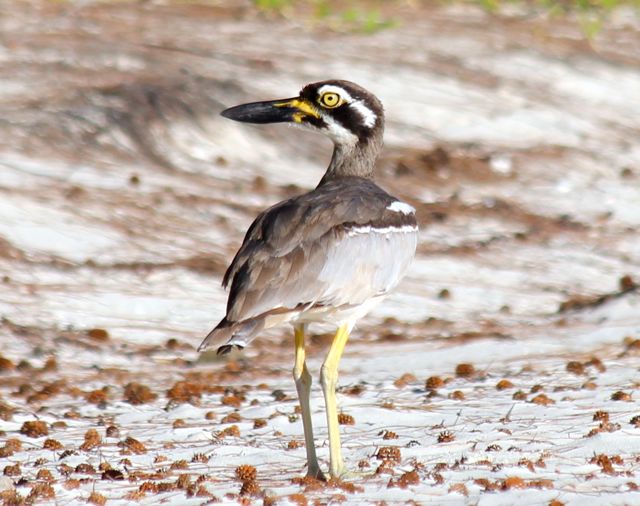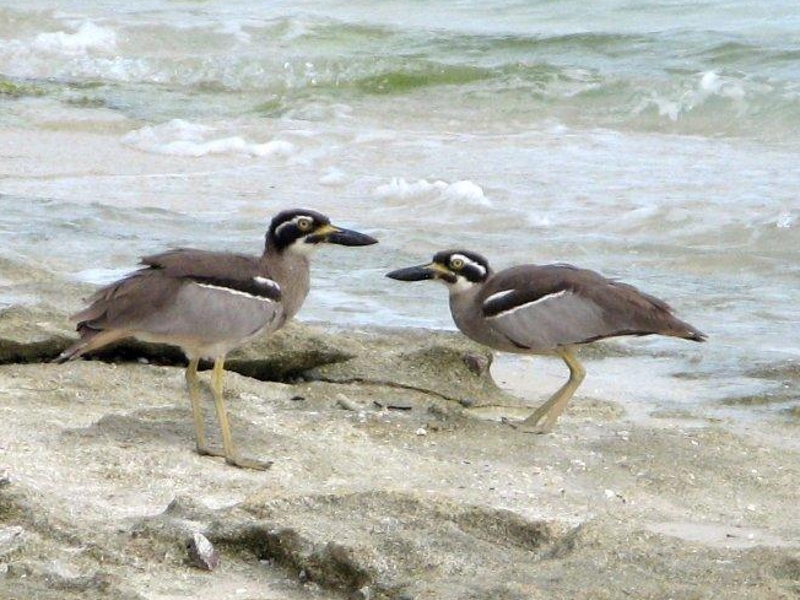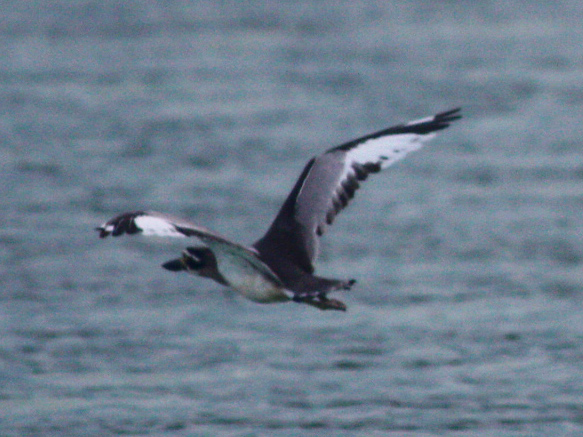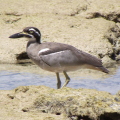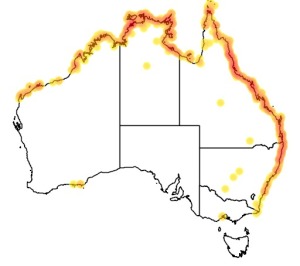�
�
�
���
Esacus magnirostris
Beach Stone-curlew
Kingdom
Animalia
Phylum
Chordata
Class
Aves
Order
Charadriiformes
Family
Burhinidae
Genus
Esacus
Species
Esacus magnirostris
Status
near threatened
Colours
Distinguishing features
Distinguishing features still need to be specified.
Size
- Up to 58 cm (Length of specimen)
Weight
- Up to 1 kg
Wingspan
- Up to 110 cm
Synonyms
Distribution
Distribution and habitat preferences
It occurs in Australasia, the islands of South-east Asia. a resident of undisturbed open beaches, exposed reefs, mangroves, and tidal sand or mudflats over a large range, including coastal eastern Australia as far south as far eastern Victoria, the northern Australian coast and nearby islands, New Guinea, New Caledonia, Indonesia, Malaysia, and the Philippines. It is uncommon over most of its range, and rare south of Cairns. (Wikipedia)
Audio recordings
Chronotypes
nocturnal (active at night) It is less strictly nocturnal than most stone-curlews, and can sometimes be seen foraging by daylight, moving slowly and deliberately, with occasional short runs. (Wikipedia)
Web resources
References
- Simpson, K., N. Day and P. Trusler (1996). Field Guide to the Birds of Australia: Fifth Edition Penguin Books, Australia.
- Simpson, K., N. Day and P. Trusler (2004). Field Guide to Birds of Australia: 7th Edition Penguin Group (Australia), Camberwell, Victoria.
